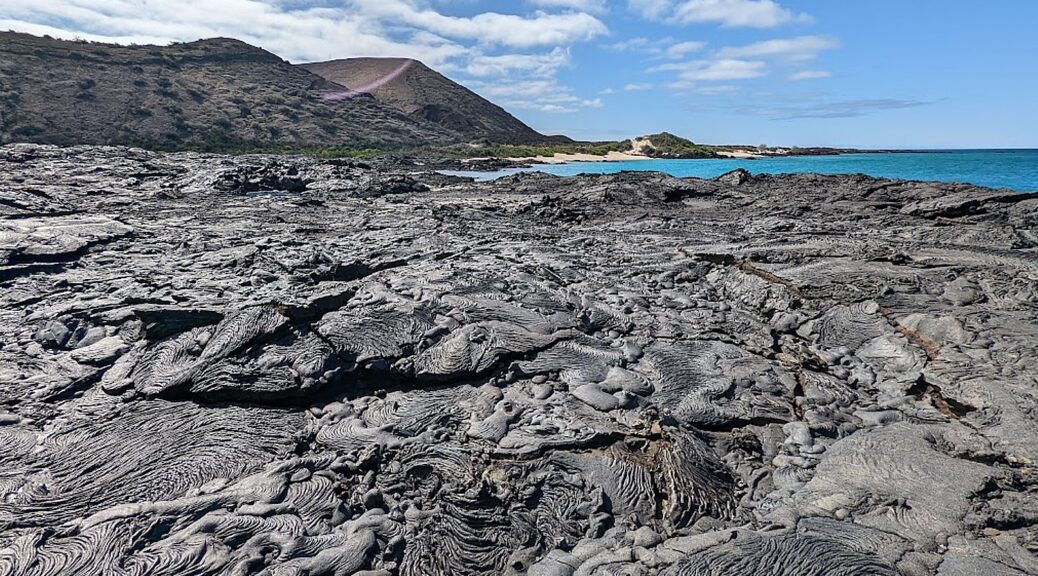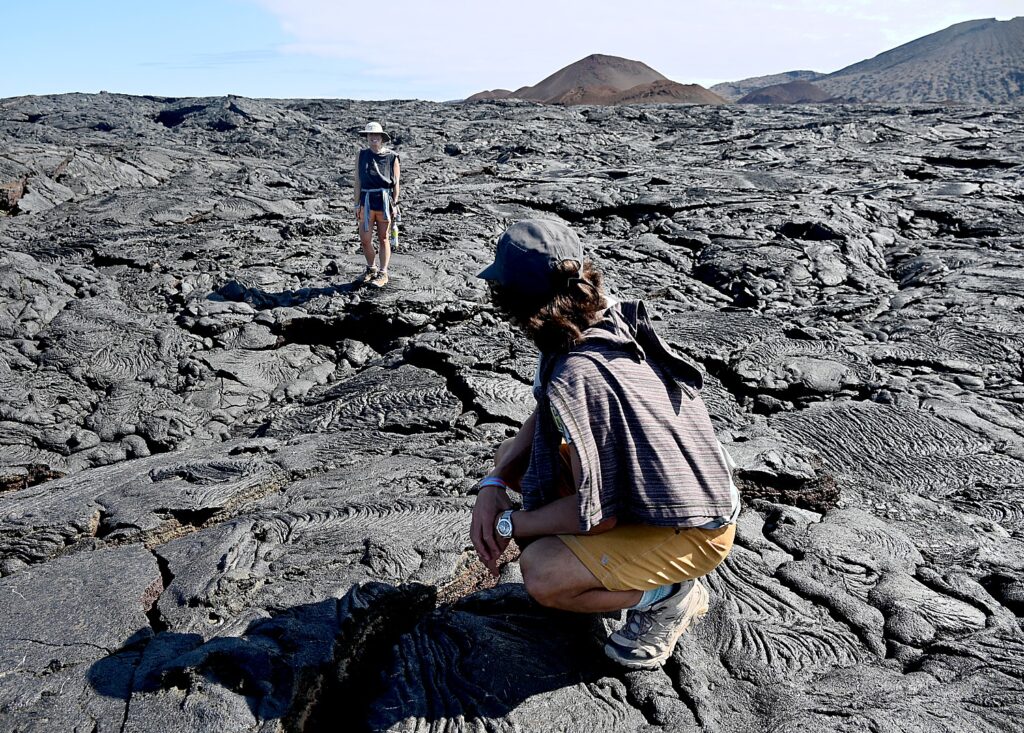
By Karen Rubin, Dave E. Leiberman, Laini Miranda, Eric Leiberman & Sarah Falter
Travel Features Syndicate, goingplacesfarandnear.com
On the second day of the four-day cruise aboard the Galapagos Legend, we sail on to Santiago island. Early in the morning, after a talk about snorkeling and getting outfitted with our gear, we have a dry landing at Bartolome island just off Santiago.
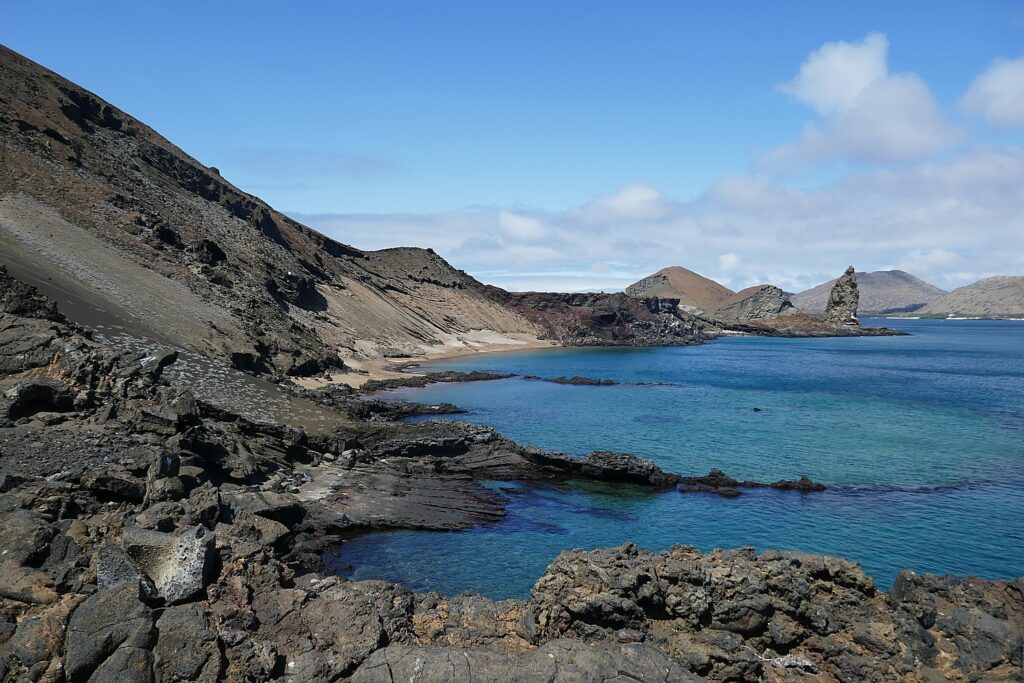
We climb a long boardwalk, 372-steps, over a barren landscape that evokes a moonscape, up to the summit for an iconic view overlooking the famous Pinnacle Rock and Santiago Island. On the way up, we get to see sea lions frolicking (courting, perhaps?) with each other, and on the way down, one perches on a deck, perhaps putting on a show for us, until another literally pushes it off (wanting attention?).

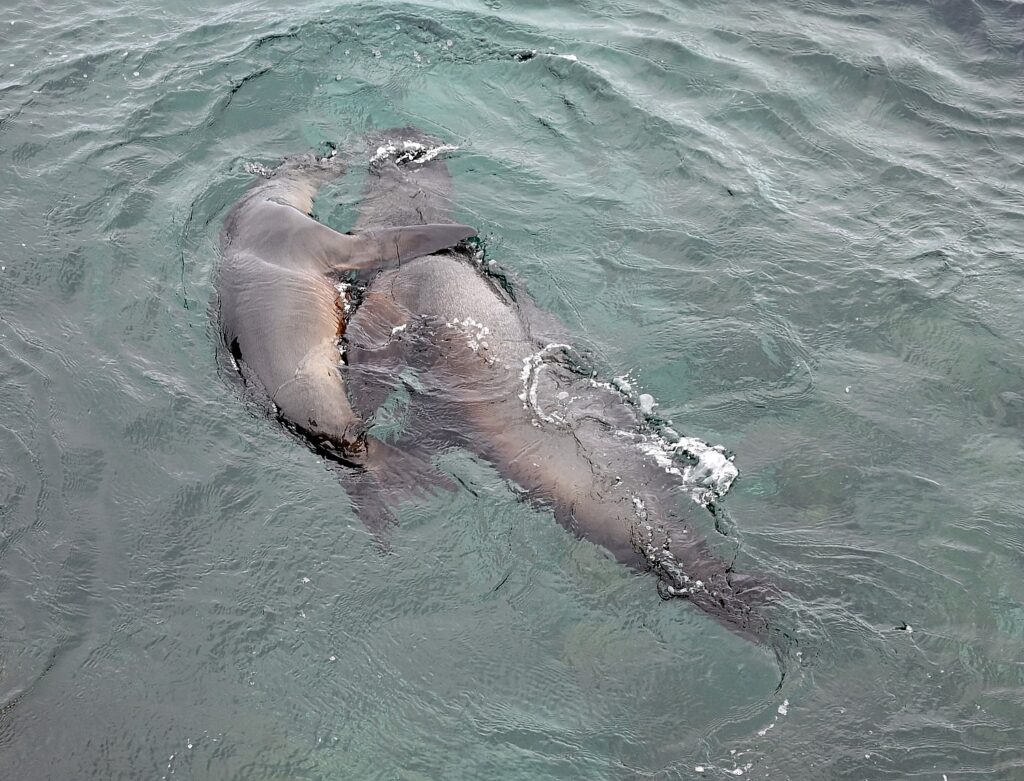
When Darwin visited here on October 5, 1835, he encountered Spaniards who came to catch tortoises for food; he also found many land iguana which today are extinct. Goats, pigs and donkeys were released on the island in the 1800s, “causing havoc for the island ecosystem and many of its native species,” the Galapagos Conservancy, a US-based nonprofit, notes. “Goats destroy habitat, cause massive erosion, and compete with native herbivores, including the giant tortoise. Pigs dig up both giant tortoise and sea turtle nests and destroy both eggs and hatchlings, dig into Galapagos petrel nests in the highlands, and destroy other ground-nesting birds. Donkeys are particularly destructive to Opuntia cactus in the arid zones. The presence of these species on Santiago had created an ecosystem very different from the pristine condition.” (https://www.galapagos.org/about_galapagos/the-islands/)
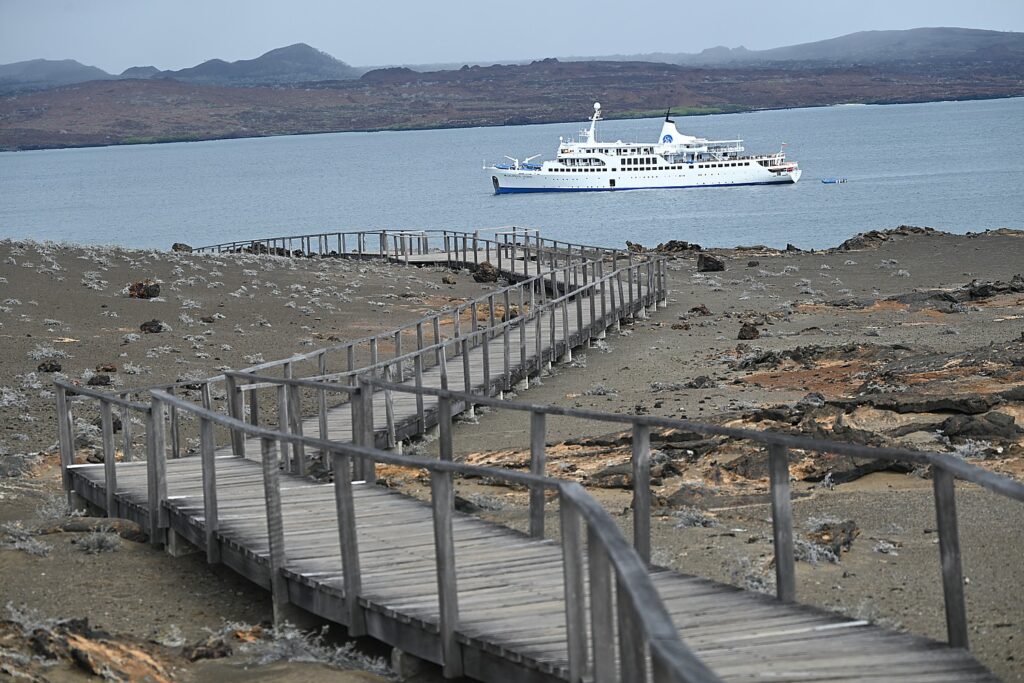
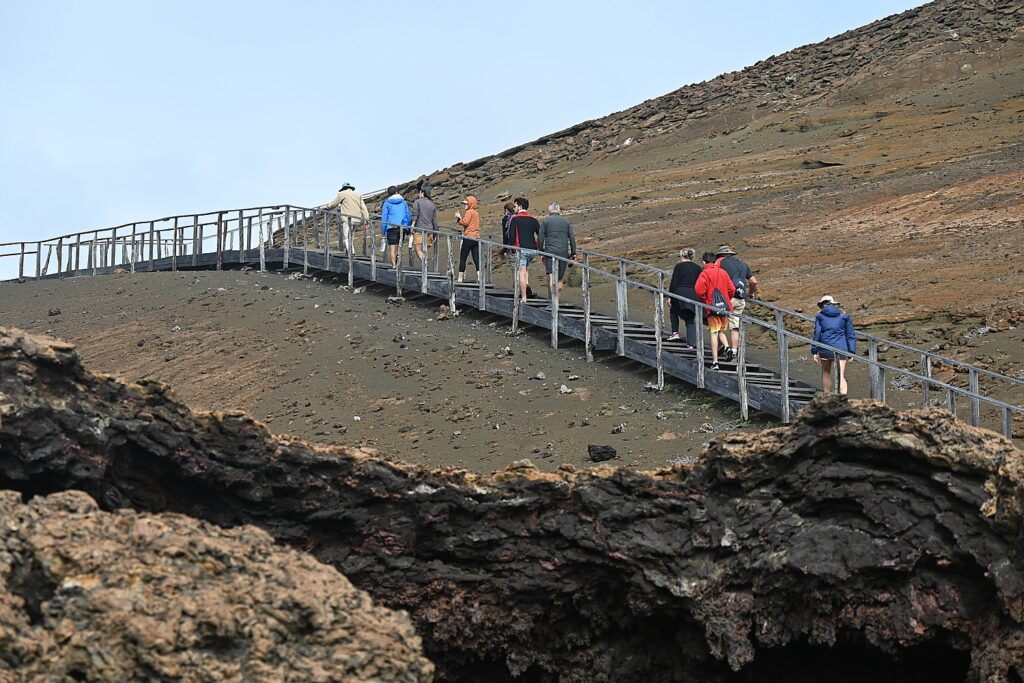
Today there are programs to eradicate the goats, which have provoked ire from animal rights groups. “Which would you prefer,” our guide, Billy, challenges, “penguins or goats? Penguins or cats? Flightless cormorants or dogs? We are sorry for animal-loving people” but the Galapagos has made its choice.
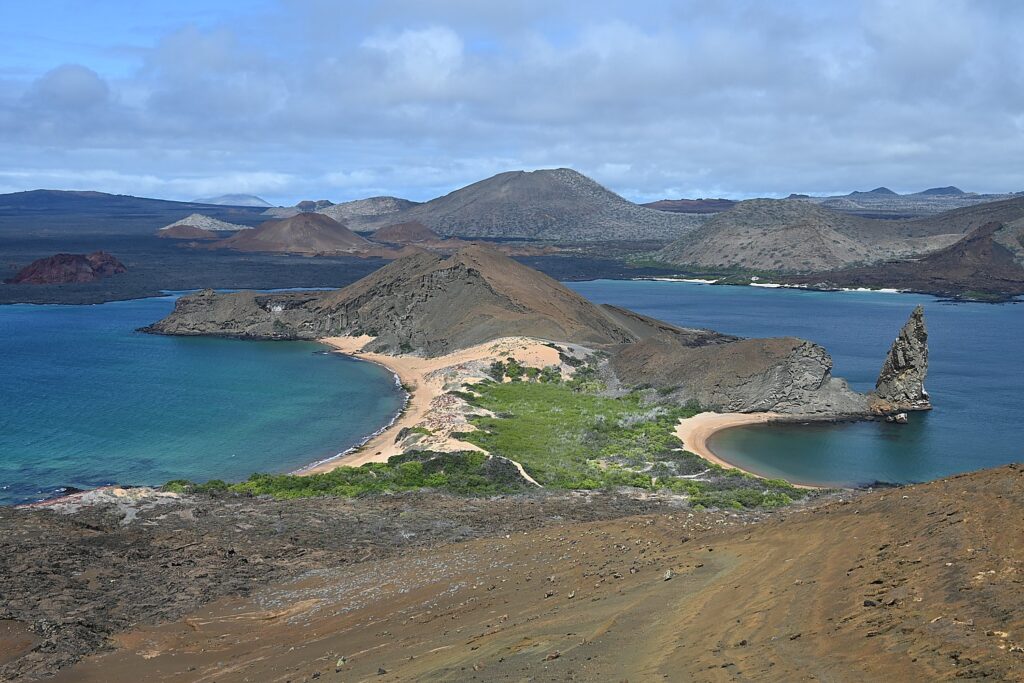

Then we ride in the dinghy along the coast where we get a glimpse of the Galapagos penguin (one of 18 penguin species but the only one found this close to the Equator).
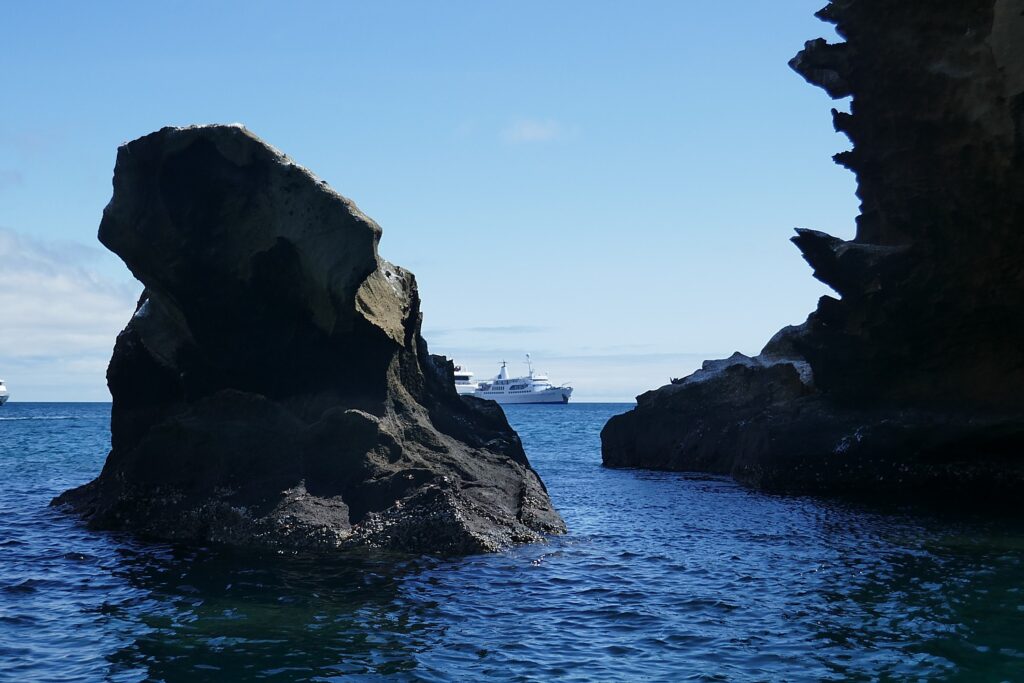
We are returned to a beach on Santiago Island to snorkel and explore for an hour. (Those who don’t want to snorkel can take a 12-passenger glass bottom boat to observe the marine life). Naturalist Alejandro, who is also a Galapagos National Park ranger, tells us to look for sea turtles, rays, maybe a small reef shark and the Galapagos penguin. (Karen is so happy with her Olympus Tough6 waterproof, shockproof camera, though David got excellent video with his cellphone in a waterproof pouch).
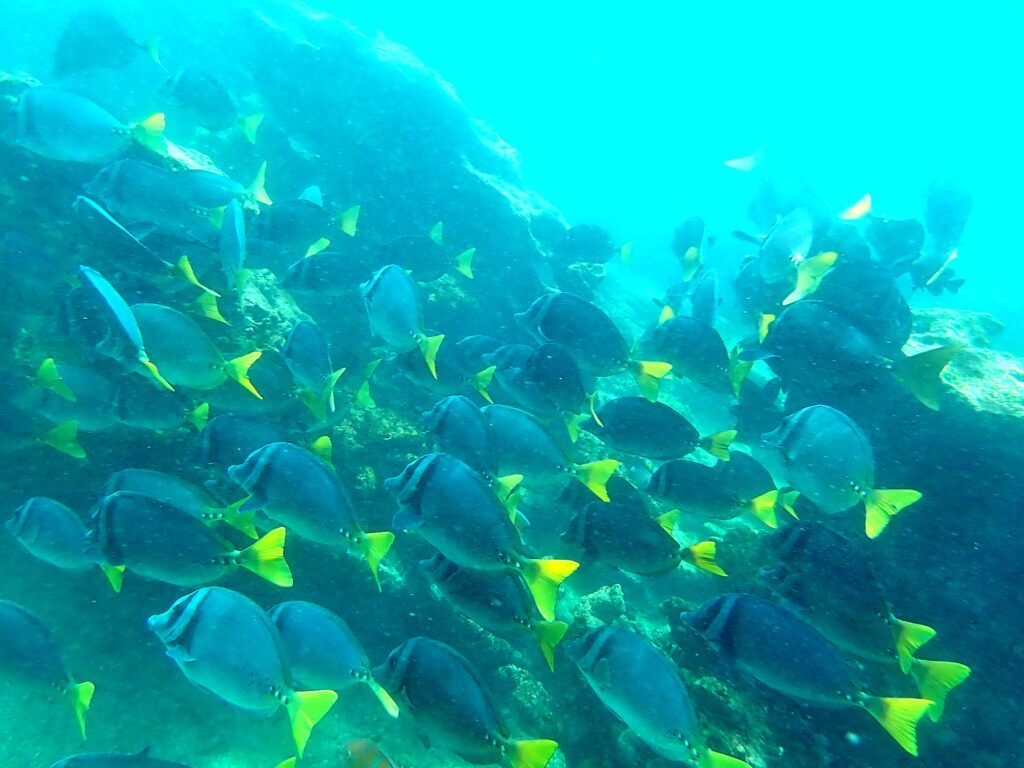
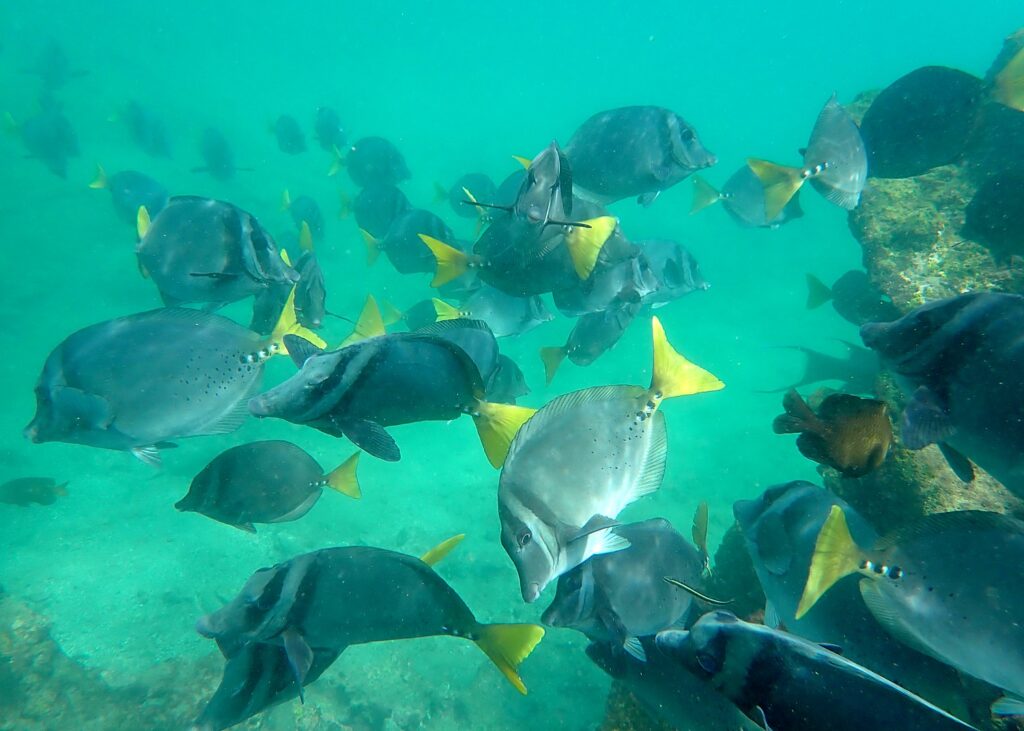
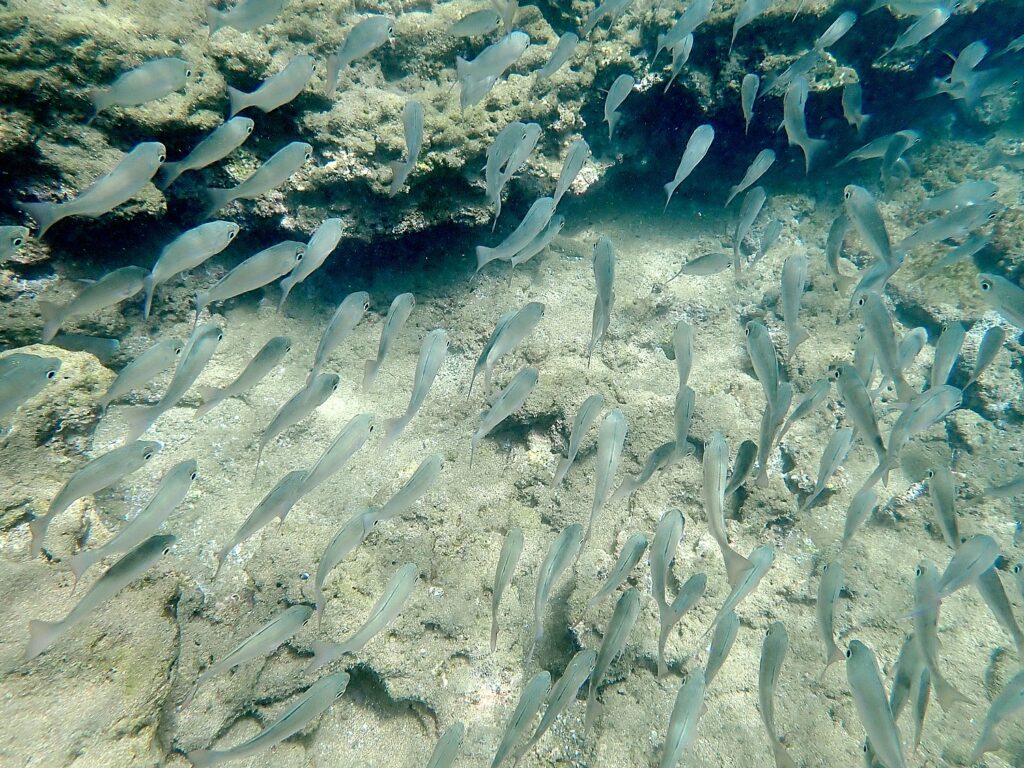
It is amazing to literally share the beach with sea lions. This also provides an opportunity to see the extraordinary Galapagos penguins; Sarah gets to swim with one. One of our group (we are Albatross; the other group is Booby) actually sees a white-tipped reef shark as he snorkels.
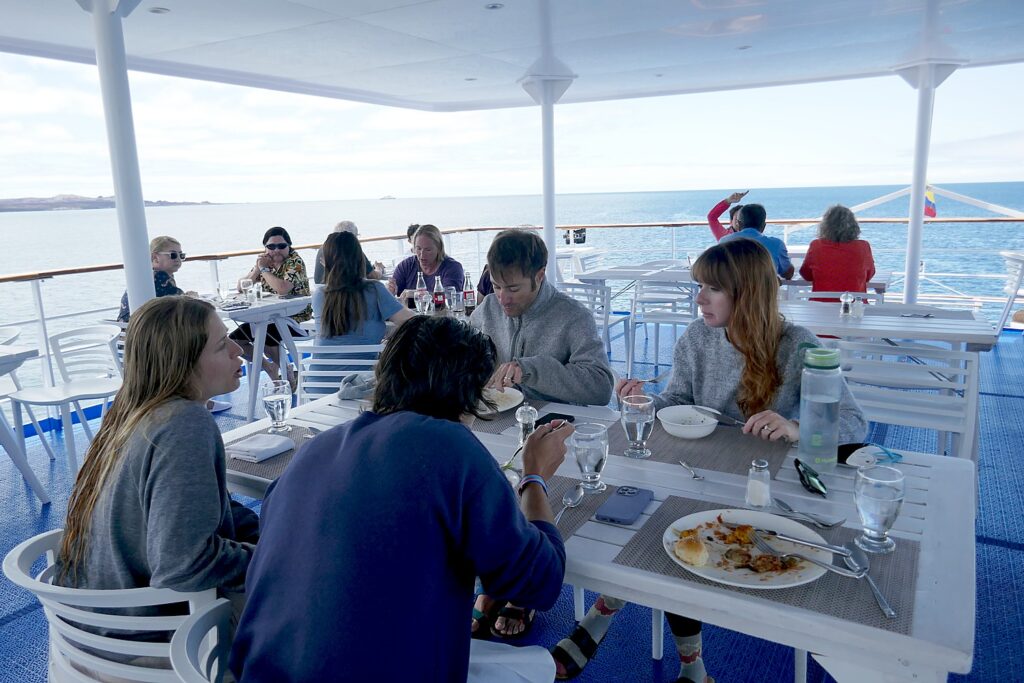
In the afternoon after a wonderful lunch, we have a dry landing off the dinghy and into the water at Sullivan Bay (Santiago Island) – a fascinating geologic site of a relatively “young” pa-hoe-hoe lava flow that came from 10 km away. It is like being dropped into a sculpture of black swirls and shapes – an absolutely stunning and dramatic landscape. Billy explains the black is because of oxidation but the layers underneath still have the original reddish-mustard color.
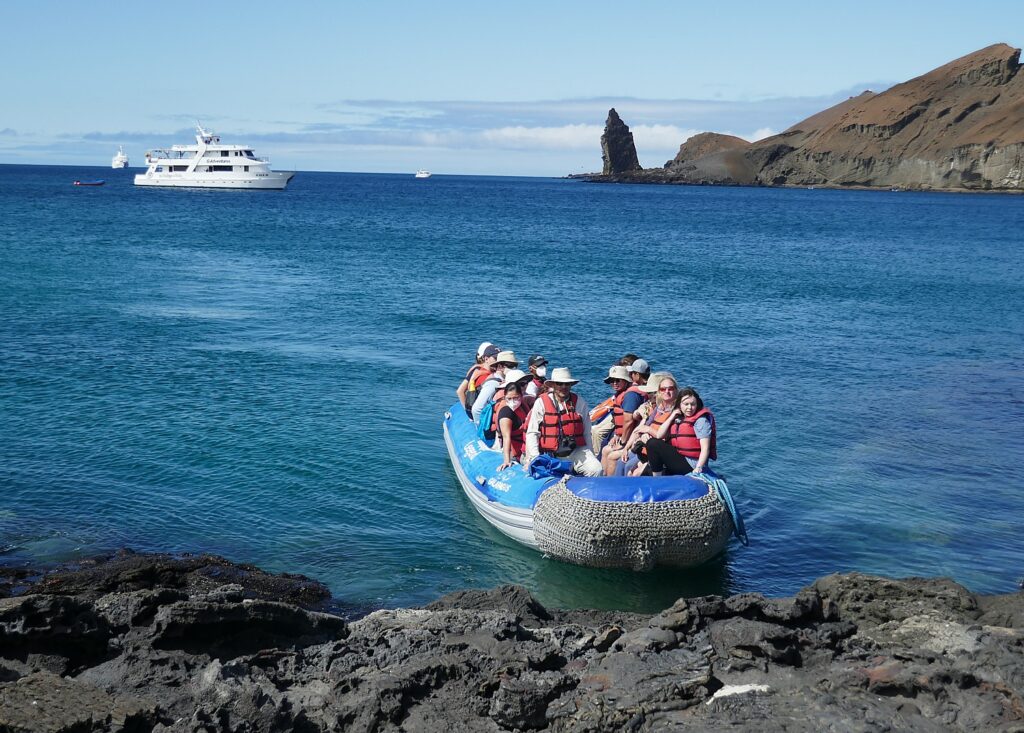
Billy says that when Darwin visited this very place, he estimated it formed only 200 years before and was spot on because scientists believe this land mass is a mere 350 years old. Now it seems virtually devoid of life – a moonscape – though when we look more carefully, we see the very beginnings of life taking hold: small mollugo plants beginning to grow out of fissures, a cactus, a locust flying by.

There is no organic soil, no water, the food chain is poor, but that locust eats the little bush and drinks its liquid and becomes food for lava lizards. This is like what Galapagos would have been at the beginning, just the top of volcano above the surface and nothing living, he says.

We are already witnessing the process of how the surface material will be broken down by lichens and eventually become soil.
Lichens are key to “terraforming” this barren landscape. “Look for moisture from steam coming out from fissures – that’s where lichens colonized.” The lichens crack the rock and turn it into organic soil that can support a plant or tree. Come back in 500 years, he says, and there will be life.


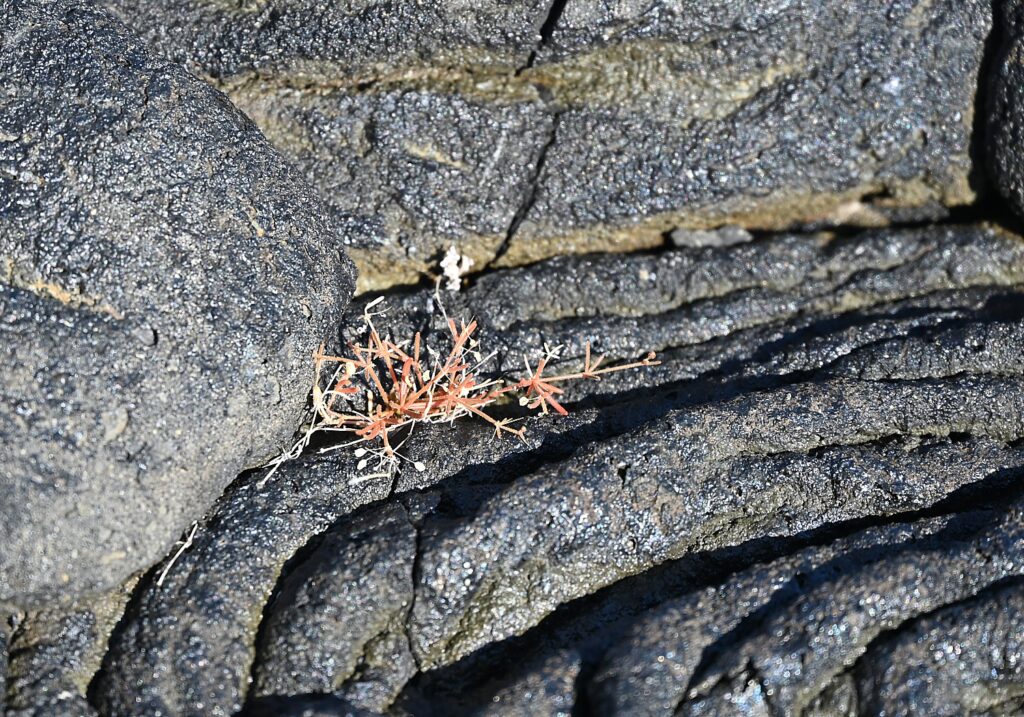
Billy tells us there used to be coal mining here, but after the National Park was established, the company was evicted. Today, the government has resisted permitting any kind of drilling, mining – for fresh water or for any of the valuable minerals that are likely in these islands, nor any of the resort or real estate development companies that would pay a small fortune for the rights to establish themselves here. The government has resisted all offers in order to preserve the Galapagos, “Nature’s Greatest Laboratory.”

“We know the Ecuador government has pressure to build resort hotels. But Galapagos has been a UNESCO Heritage site since 1978 – even if a corrupt government would want to sell, it cannot. Politically and geographically, Galapagos belongs to Ecuador, but culturally, Galapagos belongs to world.” But a lot of celebrities and billionaires have been so moved by their experience, they deposit hefty checks on their way home. “Bill Gates wrote a check for $5 million and left it at one station.”

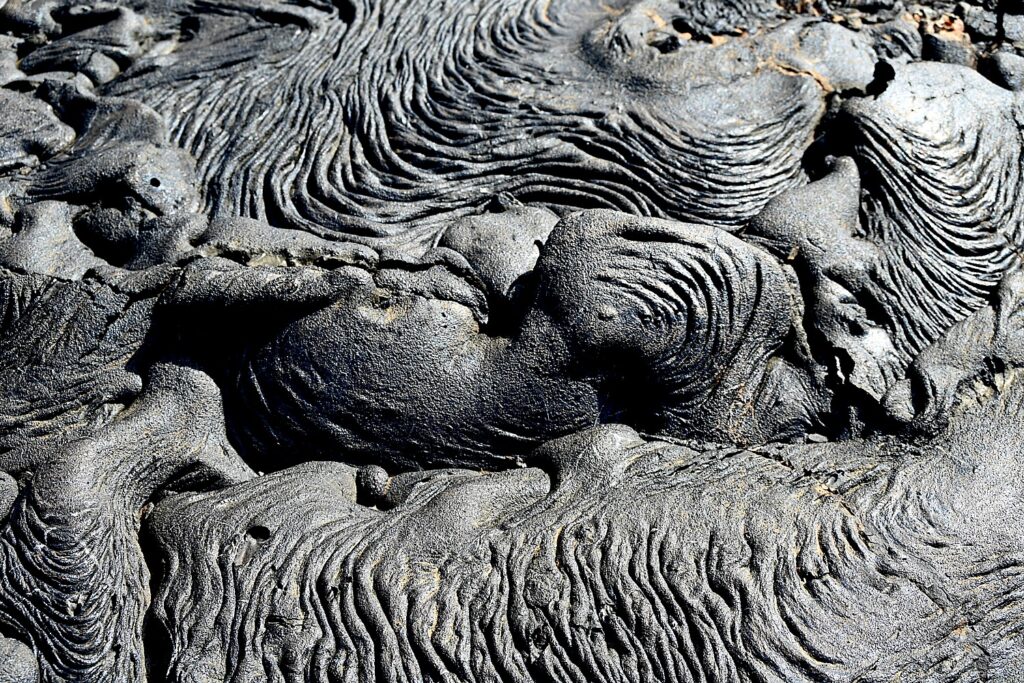
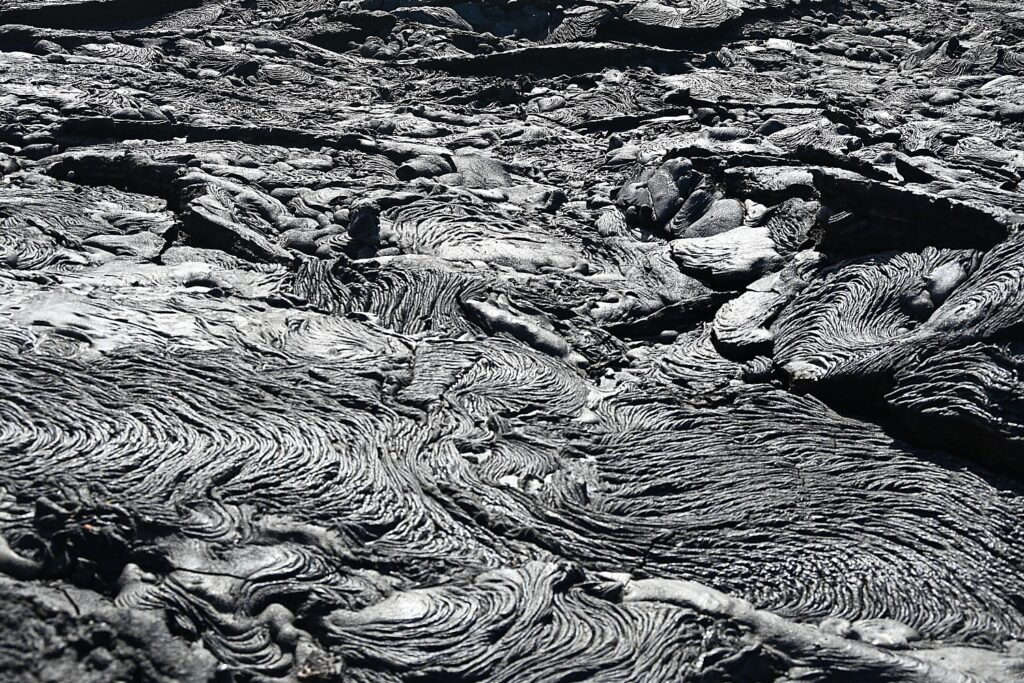
Sullivan Bay was made famous because “Master & Commander” was filmed here – but the images of the ship were all digitized because the only boats allowed in the Galapagos have to come from here. Also, all the wood that is used to build boardwalks has to be already cut down – no living trees can be cut.
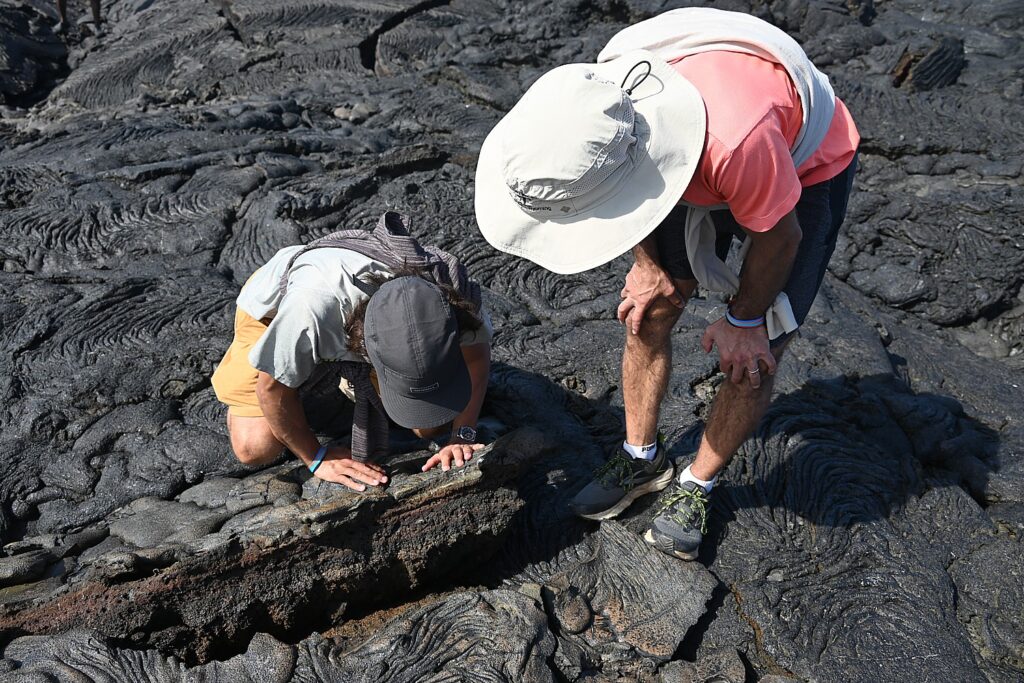
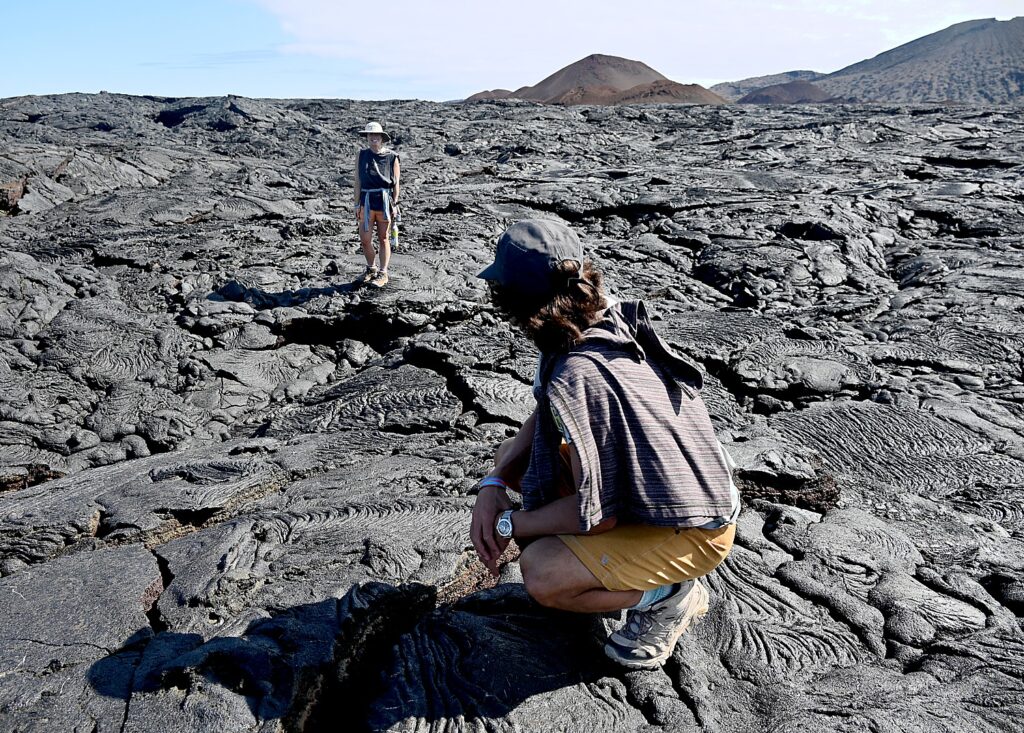
Back on board, Alejandro gives a talk about how the weather and currents are responsible for the unique life found in the Galapagos, and why, only in the Galapagos, can you see sea lions, penguins, tuna with parrot fish, angel fish and flamingoes.
From December through May, the water temperature (avg. 76°F/25°C) and air temperature (avg. low/high 72-86°F/22-30°C) are slightly warmer. Seas tend to be calmer. Rainfalls are common for a short period of time each day, but the remainder of the day tends to be very sunny resulting in high humidity. Flowers come into bloom and vegetation is more colorful. This is a good time to observe birds mating or sea turtles nesting on the beaches.
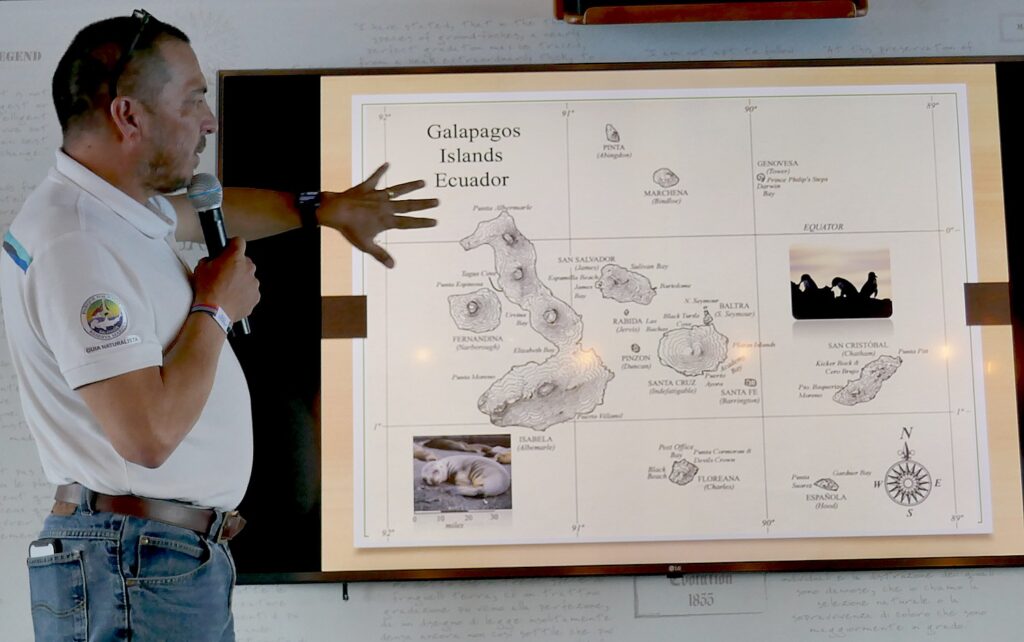
From June through November, when we visit, the Humboldt Current brings colder water (avg. 72°F/22°C) and cooler land temperatures (avg. low/high 66-79°F/19-26°C) It also brings nutrient-rich water that attracts fish and sea birds: albatross arrive on Española and penguins are easier to encounter. This is the mating season for blue-footed boobies. During this time of year clouds fill the sky and a misty rain called Garua is common. Winds tend to be stronger and seas a bit rougher. The abundant marine life makes this the preferred time of year for experienced divers.
Alejandro tells us that the sunny, blue skies we have had are unusual for this time of year (late August).
Back on board the Galapagos Legend, we thoroughly enjoy relaxing on the deck, hanging out together – there are two hot tubs and a nice-sized pool, plus a fitness center, a library, a children’s playroom, and a gorgeous lounge where coffee, tea, hot chocolate and fresh fruit are always available.
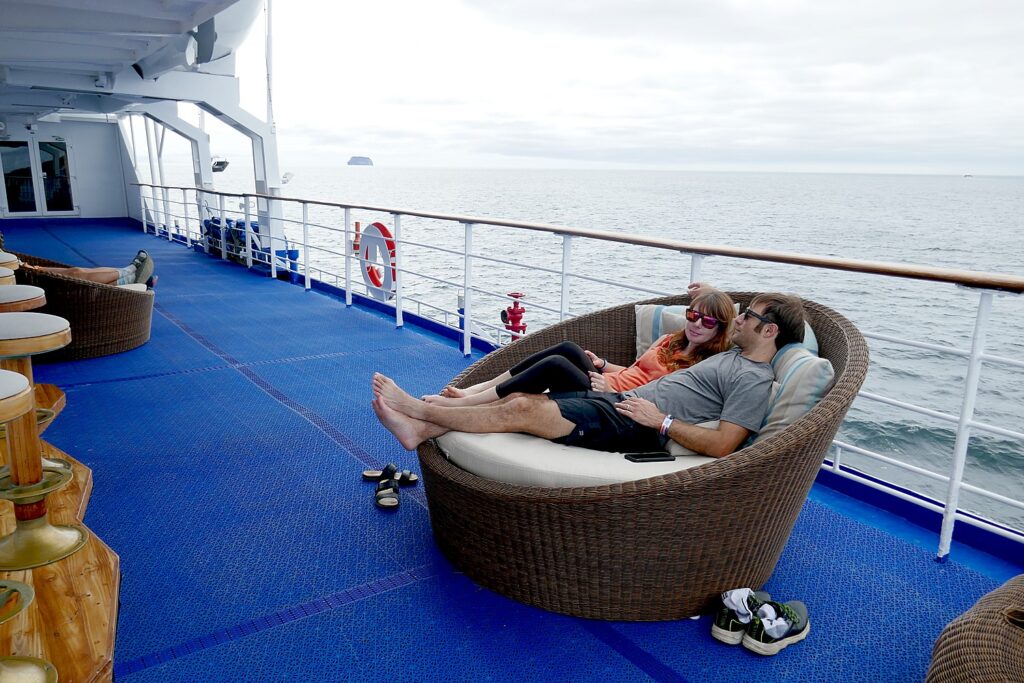
The M/V Galapagos Legend has 52 ocean view, air-conditioned cabins plus 3 interior ones, each cabin which can accommodate a matrimonial, double, triple or quadruple option, accommodating 100 passengers. The Balcony suites have private balconies and panoramic windows. The Junior suites have three meters of panoramic windows. Housekeeping is provided twice daily. You can use US plugs, and US currency. Our cabins on the Earth deck are gorgeous and spacious and can easily accommodate a triple.
The ship is large enough to feel very comfortable and have all the amenities you would want in a luxury cruise, but small enough to feel intimate.
The cuisine on board is superb (we especially love the BBQ banquet served alfresco on deck), how we are greeted on the return from our excursions and snorkeling with hot chocolate or tea and a snack, and how coffee, tea and fresh fruit are always available.
There are special touches: we absolutely adore the electronic key-bracelets we wear throughout our stay (even snorkeling) so you never have to fish for a key; how they keep track that everyone is onboard with a computerized check-in. (You can purchase beer or wine packages; wet suits are $25 to rent; kayaks are $40 pp, and you can purchase access to wifi.)
More information: Go Galapagos by Kleintours, 1-888 50 KLEIN, www.GoGalapagos.com.
Next: Our Voyage on the Galapagos Legend Continues to San Cristobal
See also:
CRUISING ON THE GALAPAGOS LEGEND: A VOYAGE OF WONDER
SANTA CRUZ ISLAND IS WONDER-FUL START TO GALAPAGOS ADVENTURE
CRUISING ON THE GALAPAGOS LEGEND: SAN CRISTOBAL ISLAND
__________________
© 2022 Travel Features Syndicate, a division of Workstyles, Inc. All rights reserved. Visit goingplacesfarandnear.com, www.huffingtonpost.com/author/karen-rubin, and travelwritersmagazine.com/TravelFeaturesSyndicate/. Blogging at goingplacesnearandfar.wordpress.com and moralcompasstravel.info. Visit instagram.com/going_places_far_and_near and instagram.com/bigbackpacktraveler/ Send comments or questions to [email protected]. Tweet @TravelFeatures. ‘Like’ us at facebook.com/NewsPhotoFeatures
